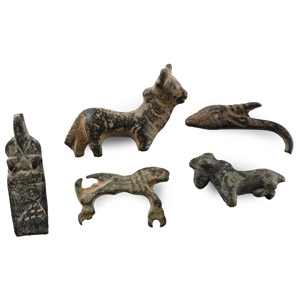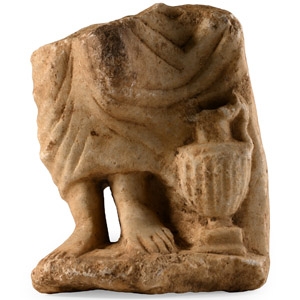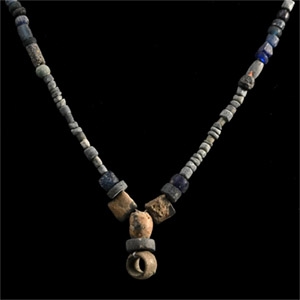Home > Auctions > 9 - 17 September 2025
Ancient Art, Antiquities, Books, Natural History & Coins
London art market, 1997.
Private collection, UK.
This lot is accompanied by an illustrated lot declaration signed by the Head of the Antiquities Department, Dr Raffaele D'Amato.
Property of a European lady living in London; from her father's family collection formed before 1978.
From the private collection of John Meredith, acquired since the 1990s; thence by descent.
This lot is accompanied by an illustrated lot declaration signed by the Head of the Antiquities Department, Dr Raffaele D'Amato.
Acquired from Coincraft, London, UK.
From the private collection of Kenneth Machin (1936-2020), Buckinghamshire, UK; his collection of antiquities and natural history was formed since 1948; thence by descent.
Accompanied by a Coincraft certificate of authenticity.
This lot is accompanied by an illustrated lot declaration signed by the Head of the Antiquities Department, Dr Raffaele D'Amato.
From a deceased estate, UK.
Acquired on the UK art market.
This lot is accompanied by an illustrated lot declaration signed by the Head of the Antiquities Department, Dr Raffaele D'Amato.
Cf. similar fragments in Ridgeway, V., Taylor, J., Biddulph, E., A Bath House, Settlement and Industry on Roman Southwark‘s North Island: Excavations along the route of Thameslink Borough Viaduct and at London Bridge Station London, 2019, figs.A5,A8,A9,A10.
One of the pottery of this collection reports the Greek name APIΣΤΩΝ (Ariston), maybe the producer of the vessel. Another one shows an aries (ram), animal sacred to the war god Mars. One of the fragments is decorated by ‘ovuli’, typical ornamentation of the Samian pottery.
From the collection of a gentleman, acquired on the London art market in the 1990s.
This lot is accompanied by an illustrated lot declaration signed by the Head of the Antiquities Department, Dr Raffaele D'Amato.
Ex property of a Munich collector; previously acquired in the 1980s.
Property of an English gentleman.
This lot has been checked against the Interpol Database of stolen works of art and is accompanied by AIAD certificate number no.160577-10073.
This lot has been cleared against the Art Loss Register database, and is accompanied by an illustrated lot declaration signed by the Head of the Antiquities Department, Dr Raffaele D'Amato.
See Neal, D.S. and Cosh, R.C., Roman Mosaics of Britain. Volume III. South-East Britain. Part 1, London, 2009, p.278, fig.255(c), for a standing naiad; see also Gaziantep Museum of Archaeology, for a similar depiction of reclining Naiad nymph of the River Euphrates.
Naiades were the nymphs of streams, fountains, lakes, rivers, marshes and springs, and in conjunction with Artemis, they were protectors of girls and nurses of the young. They were minor goddesses who attended the assemblies on Mount Olympus and often gave their names to water supplies, towns and islands.
Acquired on the UK art market, 1977-1979.
Private collection, London.
This lot is accompanied by an illustrated lot declaration signed by the Head of the Antiquities Department, Dr Raffaele D'Amato.
From the London, UK, art market in the 1990s.
This lot is accompanied by an illustrated lot declaration signed by the Head of the Antiquities Department, Dr Raffaele D'Amato.
For example of similar yellow Roman beads see Then-Obluska, J., ‘Beads and pendants from the Hellenistic to early Byzantine Red Sea port of Berenike, Egypt, Seasons 2014 and 2015’ in Polish Archaeology in the Mediterranean, 27/1, 2018, pp.203–234, figs.8, 9b,10a,12b.
In the Roman period there was a strong formal and chromatic diversity of glass beads used for necklaces and bracelets. The most common beads in forms were small biconical (lenticular), barrel-shaped, spherical and annular; the most common colours were dark blue, followed by green and yellow. The succession of glass beads often imitates jewellery made of costly materials (gold, silver, semi-precious and precious stones).
Ex German art market, 2000s.
Acquired from an EU collector living in London.
From the collection of a Surrey, UK, gentleman.
This lot is accompanied by an illustrated lot declaration signed by the Head of the Antiquities Department, Dr Raffaele D'Amato.
Ex German art market, 2000s.
Acquired from an EU collector living in London.
From the collection of a Surrey, UK, gentleman.
This lot is accompanied by an illustrated lot declaration signed by the Head of the Antiquities Department, Dr Raffaele D'Amato.
From the estate of a Yorkshire, UK, gentleman collector, acquired 1970s-1980s.
This lot is accompanied by an illustrated lot declaration signed by the Head of the Antiquities Department, Dr Raffaele D'Amato.
From the London, UK, art market in the 1990s.
This lot is accompanied by an illustrated lot declaration signed by the Head of the Antiquities Department, Dr Raffaele D'Amato.
Cf. for similar necklaces in blue glass Johns, C., The Jewellery of Roman Britain, Celtic and Classical Traditions, London, 1996, p.100.
Such necklaces testify to the popularity of glass ornaments across the Roman Empire. Roman jewellery at first followed trends set by the Etruscans, using gold and glass beads, but with the extension of the Empire and the adoption of different styles from Greece, Egypt and North Africa, jewellery designs became increasingly various and elaborate. Each bead of this beautiful necklace is unique in shape, lustre and speckling, creating a mosaic-like impression. Blue glass beads can be grouped into opaque mid-blue and deep translucent cobalt blue types.
637 - 648 of 3897 LOTS

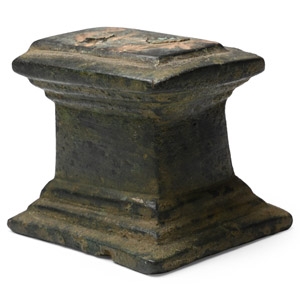

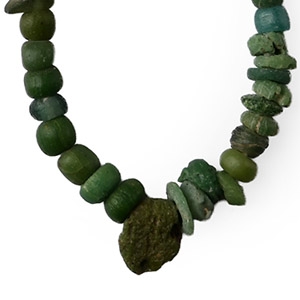
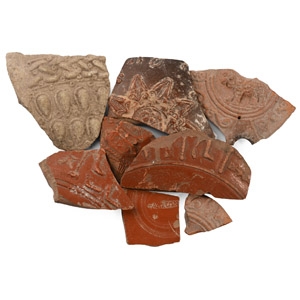
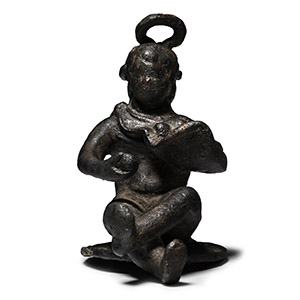
.jpg)



